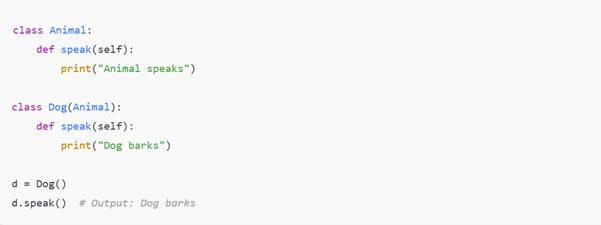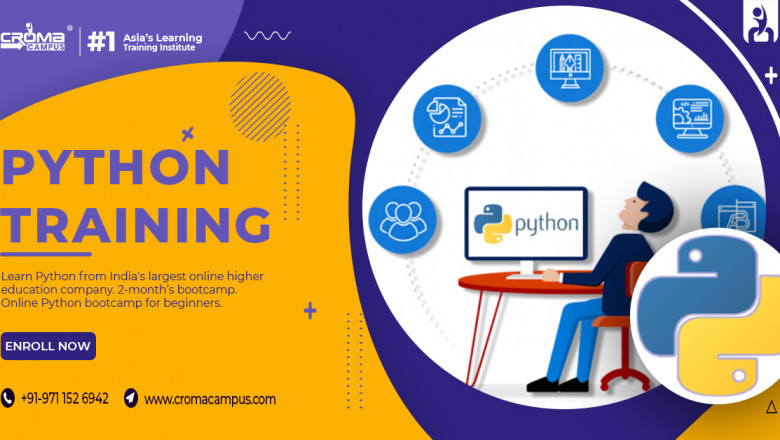views
Due to its simplicity, readability, and adaptability, Python is considered a high-level, interpreted programming language. It is extensively utilized in many different fields such as software testing, artificial intelligence, automation, data science, and web development. The fundamental elements of Python interact to produce a strong and dynamic programming environment. These components define Python’s power and its syntax. Refer to the Python Training in Noida for more information. From its object-oriented support and third-party ecosystem to its interpreter and standard library, every feature is essential to run Python. This guide explores the most essential components of Python while looking at how these components function to run the programming language effectively. Read on to know more.
Important Components of Python
Python, a high-level, adaptable programming language, is known for its readability and simplicity. It helps functional, procedural, and object-oriented programming among several programming paradigms. Understanding the basic elements of Python helps programmers in understanding how Python functions and how to produce clean, effective code.
Here are Python's most important components, their roles and functioning:
1. Python Interpreter
Python code runs on the engine known as the Python interpreter. It converts human-readable Python code into bytecode, which the Python Virtual Machine (PVM) runs upon.
How It Works
The interpreter analyses the code, creates bytecode (.pyc files), and then executes that bytecode in the PVM when a Python program is executed. This method is dynamic and happens at runtime, so enabling Python to be flexible and interactive.
2. Python Standard Library
Built-in modules and packages in the Python Standard Library offer tools for file I/O, system calls, regular expressions, data serialization, networking, and more within
How It Works
Any Python program can import these modules using the “import” statement. “Import math”, for instance, grants entry to mathematical functions. Because they are included in the core installation, these libraries need no extra downloads.
3. Data Types and Data Structures
Along with complex data structures like “list”, “tuple”, “set”, and “dict”, Python provides a range of built-in data types including “int”, “float”, “str”, and “bool”.
How It Works
Every data type has unique properties and techniques. A list, for instance, lets one dynamically change the contents of a list by means of slicing and indexing. Efficiency in data organization and storage relies on data structures.

4. Functions
In Python, functions are reusable pieces of code that execute a particular task. Python also encourages higher-order functions and anonymous methods (lambda functions). One can refer to Python Training Institute in Delhi to learn how to use Python functions.
How It Works
Using the “def” keyword, functions are defined. Then these functions can becalled by their name. They can accept arguments and produce values. More flexibility is offered by Python's default and keyword arguments.

5. Control Flow
Python programs' execution path is managed by control flow techniques such as “if”, “for”, “while”, and exception handling statements.
How It Works
These constructs run code blocks depending on evaluations of conditions. By handling runtime errors using “try”, “except”, and “finally”, developers can enhance exception handling and build strong code.

6. Object-Oriented Programming (OOP)
Python allows encapsulation, inheritance, and polymorphism by means of classes and objects, therefore facilitating OOP.
How It Works
Objects are instances of classes developed using the “class” keyword. Methods are functions defined within classes that run on instance variables.

7. Modules and Packages
Python files containing reusable code are modules. Directories with many modules and a special “_init_.py” file are packages.
How It Works
One can bring a module in either “from module import” or “import”. Python finds modules and packages using the PYTHONPATH environmental variable.

8. File Handling
Through native functions for reading and writing text and binary files, Python simplifies file operations.
How It Works
The “open()” command opens files. Reading and writing is accomplished via methods like “read()”, “write()”, and “close()”. The “with” statement guarantees file closing by hand.

9. Python Virtual Machine (PVM)
Executed Python bytecode uses the PVM as part of the interpreter.
How It Works
The PVM reads and executes line by line the bytecode Python source code is compiled to. This is what makes Python platform independent.
10. Third-Party Libraries
Apart from the basic library, Python has a vast ecosystem of third-party libraries including NumPy, Pandas, Flask, Django, and many others.
How It Works
Python's package manager, “pip”, installs these libraries. Installed, they can be used and imported exactly like built-in modules.
Conclusion
The strength of Python's components, each designed for clean syntax, quick development, and scalability, lies in its simplicity. The Python Online Training courses offer comprehensive training to the aspiring professionals in using various components. From its object-oriented capabilities and third-party ecosystem to its interpreter and standard library, these elements work in harmony to make Python among the most widely used programming languages in the world. Knowing these factors helps developers to produce quicker, stronger, and more dependable software.














Comments
0 comment